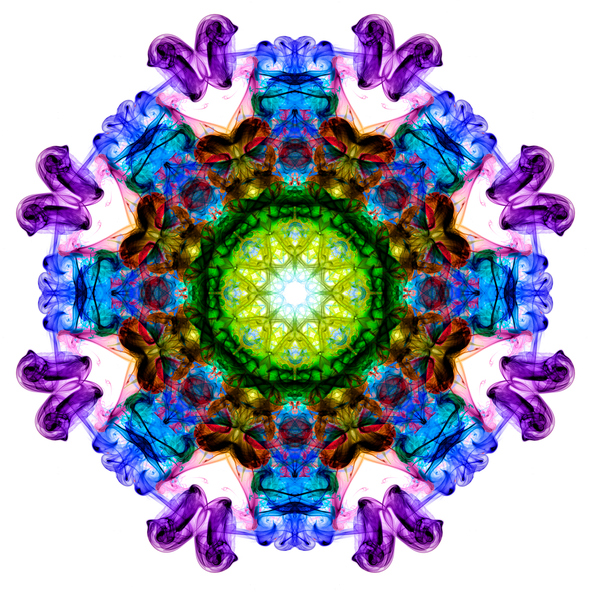 The other four light shows highlighted in this series depend on electricity, but light-based art began with natural sunlight shining through a static object like a stained glass window – or a kaleidoscope.
The other four light shows highlighted in this series depend on electricity, but light-based art began with natural sunlight shining through a static object like a stained glass window – or a kaleidoscope.
According to Encyclopedia.com, the word kaleidoscope comes from the Greek words kalos, eidos, and skopios meaning beautiful, form, and view, respectively. The ancient Greeks, notably the mathematician Ptolemy, did apparently contemplate the effects of abutting multiple mirrors, but the kaleidoscope as we know it today is credited to Scotsman David Brewster (1781-1868.) He patented it in 1816, although it was not his primary interest or source of fame in his lifetime. In fact, he was a highly respected scientist, known for his studies on the reflection, absorption, and polarization of light – work that got him elected a fellow of the Royal Society (Britain’s leading scientific organization) in 1815 and knighted in 1831.
Although the kaleidoscope today is thought of primarily as a toy, it is also a tool for designers. It produces ranges of colors and patterns used to create rugs, stained glass, jewelry, architectural patterns, wallpaper, woven tapestries, and ideas for painters.
 As children, and even adults, most of us are momentarily fascinated by the beautiful changing images produced by a kaleidoscope as we twist the end of the tube, but we quickly tire of having to squint with one eye through a peephole. Fortunately, we no longer have to. Play a bit of this mesmerizing, 2-hour long video of kaleidoscopic images. Or this one. Use them on a large screen TV or a tablet for calming yourself or others. Learn more about the artists at http://hdcolors.com.
As children, and even adults, most of us are momentarily fascinated by the beautiful changing images produced by a kaleidoscope as we twist the end of the tube, but we quickly tire of having to squint with one eye through a peephole. Fortunately, we no longer have to. Play a bit of this mesmerizing, 2-hour long video of kaleidoscopic images. Or this one. Use them on a large screen TV or a tablet for calming yourself or others. Learn more about the artists at http://hdcolors.com.
